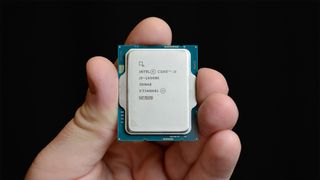It looks as if Intel goes to boost the bounds for temperatures with its next-gen desktop processors, which is usually a signal of self assurance within the balance of Arrow Lake – a hopeful trace of items to return, hopefully, on the subject of the latest worries round Core i9 balance.
Earlier than we pass jumping off Conclusions Cliff, alternatively – it’s by no means a good move to jump off any cliff, in spite of everything – we must endure firmly in thoughts that freshly aired specifications for Intel’s temperature thresholds are only a rumor as posted on X by means of leaker Jaykihn (hat tip to Tom’s {Hardware}).
TJMax for Arrow Lake and Panther Lake is 105C.Lunar Lake keeps the former 100C.July 15, 2024
We’re informed that the TJMax – that’s the ‘most thermal junction’ temperature (we’ll come again to the jargon-busting momentarily) – for Arrow Lake and Panther Lake (next-gen cell CPUs for 2025) is 105C.
Panther Lake for notebooks going this direction isn’t a wonder in reality – as Tom’s notes, Meteor Lake for laptops has already upped the ante to 105C – however desktop CPUs from the current-gen (going again to Alder Lake) have caught with 100C for this restrict (which Lunar Lake cell may also run with, it sounds as if).
So, with Arrow Lake on desktop, Intel is expanding this by means of 5%, that means that the chip can be allowed to achieve the next temperature (105C) prior to the TJMax thermal safeguards kick in, lowering the facility to deliver down the temperature – which additionally drops efficiency ranges, naturally.
In brief, Arrow Lake can be allowed to run 5% warmer, and let’s talk about what this may imply subsequent.

Research: A good signal – proper?
Why may Intel do that? Indubitably, the intestine response from some other people on-line is that Intel must be operating on balance, given the well-aired woes about Core i9 CPUs (from the thirteenth and 14th generations) crashing when gaming because of problems Intel nonetheless hasn’t absolutely pinned down.
Those are being concerned issues certainly, and we’ve lately mentioned how such reliability problems for higher-end processors may just eliminate would-be patrons of next-gen Arrow Lake, probably. Listening to that thermal safeguards are going to be raised may look like a doubtful plan from Intel, by contrast backdrop – however we wish to assume once more right here.
At the beginning, that is only a rumored tweak to the spec – it would possibly not occur. And secondly, if the TJMax is raised to 105C, somewhat than a priority for balance, we’d take this as a good signal. Intel will have to definitely be assured sufficient within the high quality of its silicon and the stableness of the next-gen CPUs to be upping thermal limits within the first position. If reliability had even the slightest query mark, this wouldn’t be taking place with Arrow Lake – it wouldn’t make any sense to make this type of transfer, definitely?
This makes us hopeful that high-end Arrow Lake processors (Core Extremely 9) received’t be affected by the similar problems as Raptor Lake (and its refresh) has skilled with Core i9s.
This transfer can be partially certain up in Arrow Lake’s extra complex 3nm procedure, and denser node, having the ability to higher take care of rather greater temps.
At any fee, we wouldn’t concern at this level, even though that hasn’t stopped numerous denizens of the standard boards and social media platforms from ringing some alarm bells somewhat loudly. And to be truthful, we get that, given the present Core i9 scenario, as discussed – which we’re hoping to listen to a contemporary commentary on very quickly.

Allow 48h for review and removal.